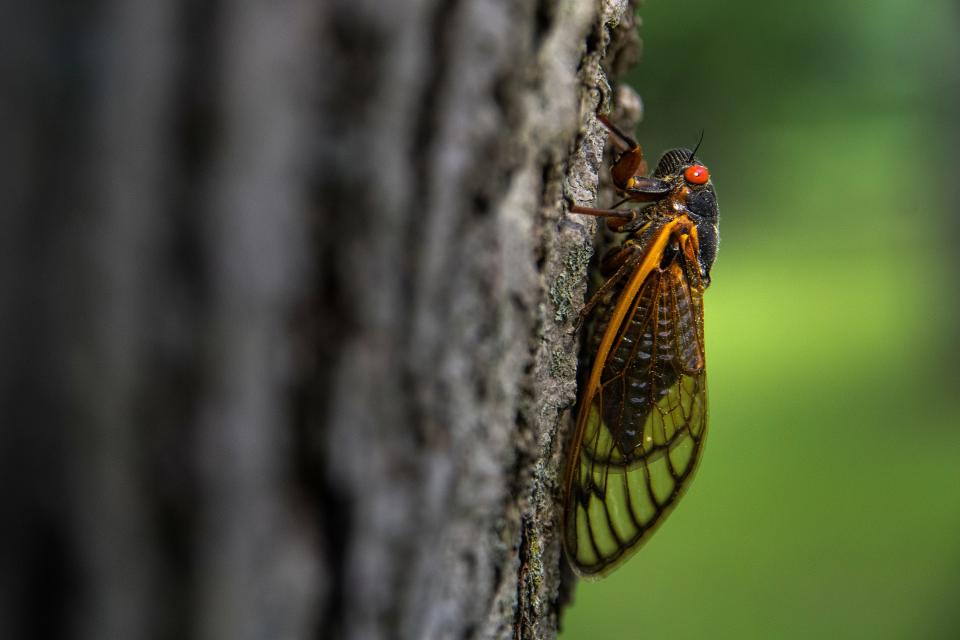Worried about swarms of loud insects interrupting the rest of your spring? In more than a dozen states, that will soon be a fear come true, as trillions of crickets prepare to emerge from the ground.
Fortunately, the First State is safe from the massive double swarm that promises a lot of buzz for Americans in the Midwest and Southeast.
What is a cicada?
Most people recognize crickets by their distinctive sound and tendency to come out in large numbers and follow specific patterns. Some of these insects emerge every year, while others appear only every 13 or 17 years, according to the U.S. Environmental Protection Agency.
Cicadas usually appear in the spring as the soil begins to warm, and usually stay out until late June. They have one purpose – and no, it’s not to give people headaches and leave their carcasses everywhere.

Male crickets produce “call songs” to attract females for mating, according to the University of Connecticut’s Biodiversity Research Collections. These females then lay as many as 600 eggs in nests they make in living twigs. Once the eggs hatch six to 10 weeks later, they fall from the trees, burrow underground and remain there to develop until the cycle begins again.
For annual crickets, this happens every year, according to research from the University of Connecticut. But in periodic crickets such as the emerging swarms, these emergences are much less frequent.
What’s so special about this year’s swarms?
According to the University of Connecticut, this spring will mark the first time since 2015 that a 13-year-old brood will emerge at the same time as a 17-year-old brood. It will also be the first time that two specific broods, known as Brood XIX and Brood XIII, have arisen together since 1803.
Still, experts say it’s unlikely the broods will overlap in location. The 13-year Brood XIX will be spread across the Southeast and Midwest, while the 17-year Brood XIII will be more concentrated in the upper Midwest.
Cicada breeding map
Research from the University of Connecticut shows that the most likely point of contact between the broods is in Springfield, Illinois. And while there is a chance that the broods will co-occur in small patches of forests in Illinois, research shows that the broods will not overlap “to a significant degree.”
Does Delaware have crickets?
Yes, Delaware has crickets. Fortunately, you don’t have to worry about that this season.
Cicada map 2024: Latest news on Broods XIII and XIX, as sightings have been reported in the south
According to a cicada breeding map from the United States Forest Service, part of the Department of Agriculture, Delaware is known to see Brood X, a species of the 17-year periodical cicadas.
Brood
Send story tips or ideas to Hannah Edelman at hedelman@delawareonline.com. For more coverage, follow them on X on @h_edelman.
This article originally appeared in Delaware News Journal: Cicada season is upon us. What Delaware can expect






